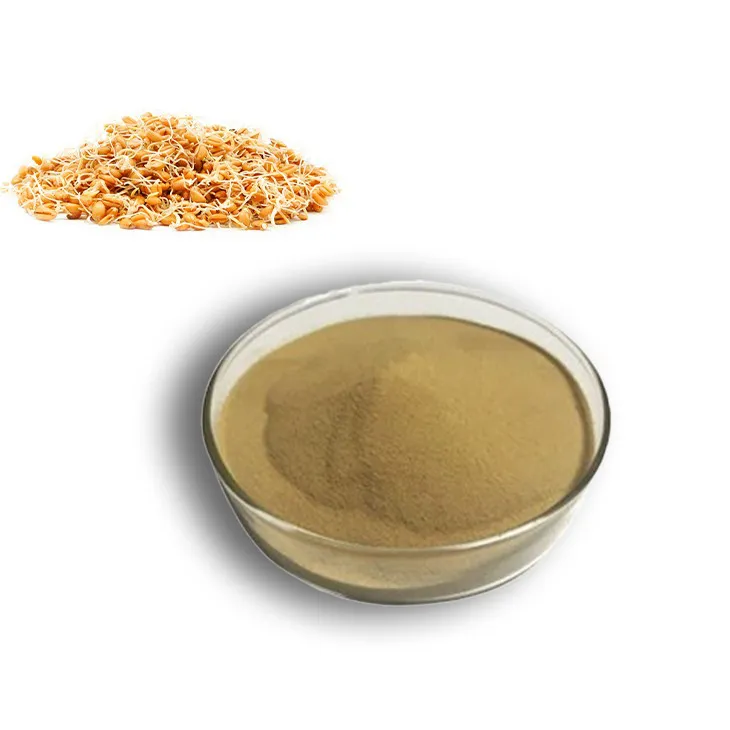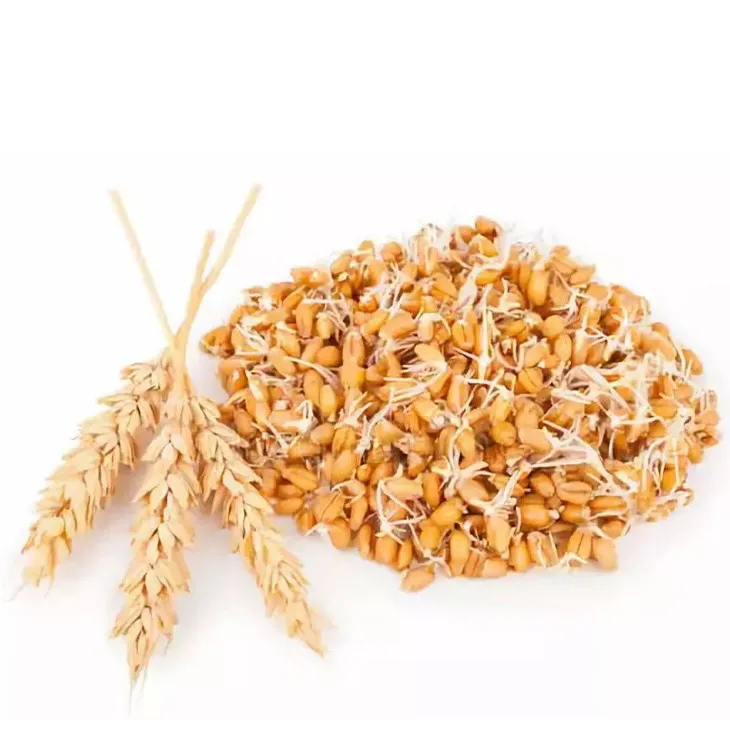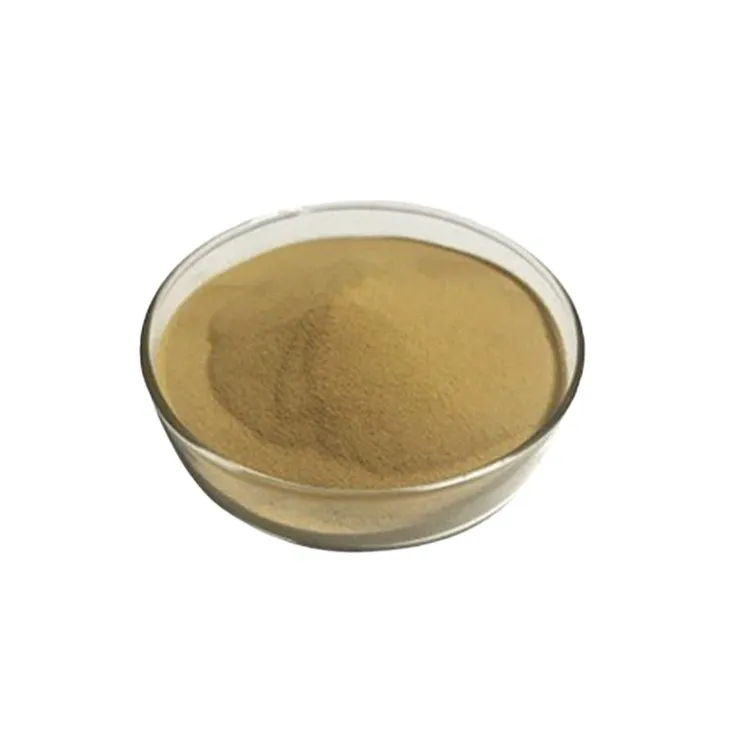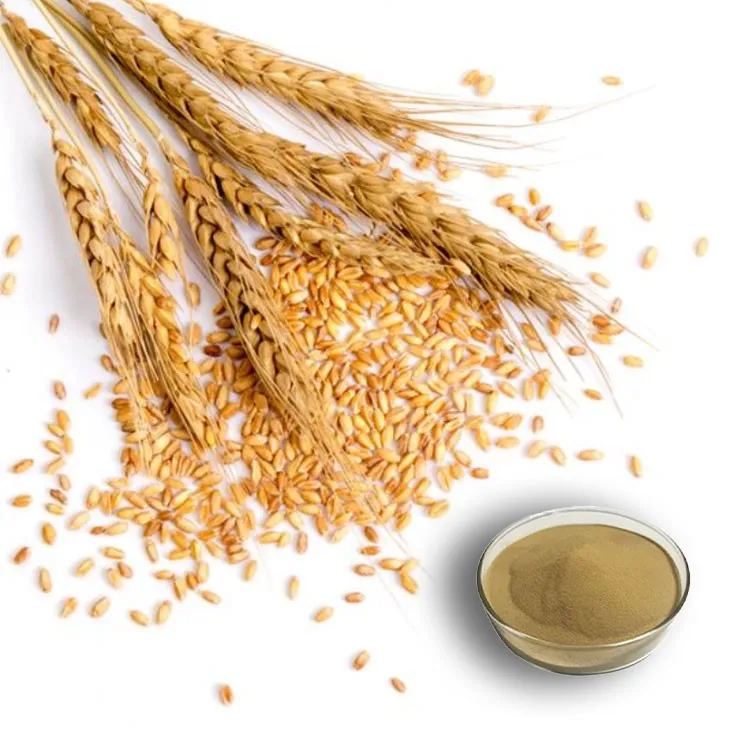- 0086-571-85302990
- sales@greenskybio.com
Organic Wheat Germ Extract Powder Factory.
2024-11-28

1. Introduction to Organic Wheat Germ
Organic wheat germ is a remarkable natural product that has gained significant attention in the health and wellness industry. It is, in essence, the embryo of the wheat kernel. This tiny part of the wheat contains a wealth of nutrients that are essential for human health. Rich in vitamins such as vitamin E, B - vitamins (including thiamine, riboflavin, and niacin), and minerals like magnesium, zinc, and selenium, it is no wonder that it is considered a superfood.
Vitamin E, for instance, is a powerful antioxidant that helps protect cells from damage caused by free radicals. The B - vitamins play crucial roles in energy metabolism, nerve function, and the production of red blood cells. Minerals like magnesium are involved in over 300 enzymatic reactions in the body, including those related to muscle and nerve function, and blood sugar regulation.

2. The Role of the Organic Wheat Germ Extract Powder Factory
An organic Wheat Germ Extract powder factory serves as the epicenter where the potential of wheat germ is fully harnessed. The primary role of such a factory is to transform the raw, nutrient - rich wheat germ into a concentrated, easy - to - use powder form.
This transformation is not a simple task. It requires a combination of advanced technology, strict quality control, and a deep understanding of the properties of wheat germ. The factory acts as a bridge between the agricultural source of wheat germ and the various industries that can benefit from its extract powder.

3. The Production Process in the Factory
3.1. Procurement of Organically - Grown Wheat
The first step in the production process is the procurement of high - quality, organically - grown wheat. This is a crucial starting point as the quality of the final extract powder is directly related to the quality of the source wheat.
Organic farming practices ensure that the wheat is free from pesticides, synthetic fertilizers, and genetically modified organisms (GMOs). The factory typically partners with reliable farmers or agricultural cooperatives that adhere to strict organic farming standards. These standards are often regulated by international or national bodies to ensure authenticity and quality.
3.2. Isolation of Wheat Germ
Once the wheat is procured, the next step is to isolate the wheat germ. This involves a series of mechanical processes. The wheat kernels are first cleaned to remove any impurities such as dirt, stones, or other foreign particles.
Then, a milling process is employed. This milling process needs to be precise to ensure that the wheat germ is separated intact without being damaged. Specialized milling equipment is used to break open the wheat kernels and separate the germ from the endosperm and bran. This step requires careful monitoring as any deviation in the milling process can affect the quality and yield of the wheat germ.
3.3. Extraction of Essence
After isolating the wheat germ, the extraction of its essence begins. This is a complex process that involves using various extraction methods. One common method is solvent extraction, where a suitable solvent is used to dissolve the active components present in the wheat germ.
However, in an organic factory, the choice of solvent is crucial to maintain the organic nature of the product. Organic solvents that are safe for consumption and compliant with organic regulations are typically used. Another method that can be employed is cold - press extraction, which is a more natural and less chemically intensive process. This method helps preserve the heat - sensitive nutrients in the wheat germ.
3.4. Drying and Powdering
Once the essence is extracted, the resulting liquid contains the valuable components of the wheat germ. This liquid needs to be dried to convert it into a powder form. There are different drying techniques available, such as spray drying or freeze - drying.
Spray drying is a more commonly used method in large - scale production. It involves spraying the liquid into a hot air chamber, where the water evaporates quickly, leaving behind a fine powder. Freeze - drying, on the other hand, is a more expensive process but is preferred when it is necessary to preserve the maximum amount of nutrients. After drying, the powder may be further processed to ensure a consistent particle size and texture, resulting in a fine, easily - digestible organic Wheat Germ Extract powder.

4. Significance of the Factory in Promoting Healthy Lifestyles
The organic wheat germ extract powder produced by these factories has a wide range of applications in promoting healthy lifestyles.
4.1. In Dietary Supplements and Functional Foods
One of the most common uses of the powder is in dietary supplements. Due to its high nutrient content, it can be used to supplement the diet of individuals who may not be getting enough of these nutrients from their regular diet. For example, vegetarians and vegans may benefit from the vitamin B12 - like compounds found in wheat germ extract powder.
It is also used in functional foods. Functional foods are those that provide additional health benefits beyond basic nutrition. The addition of organic wheat germ extract powder to products like breakfast cereals, energy bars, or yogurt can enhance their nutritional value. For instance, it can boost the antioxidant content of these products, making them more beneficial for consumers' health.
4.2. In the Skincare Industry
The benefits of organic wheat germ extract powder are not limited to internal consumption. It also has applications in the skincare industry. The vitamins and antioxidants present in the powder can have a positive impact on the skin.
Vitamin E, for example, is well - known for its skin - nourishing properties. It helps in moisturizing the skin, reducing the appearance of wrinkles, and protecting the skin from environmental damage. The powder can be incorporated into skincare products such as creams, lotions, and serums. These products can then be used to improve skin health, giving it a more youthful and radiant appearance.

5. Sustainability and Environmental - Friendliness in the Factory
In today's world, sustainability is a key consideration for any manufacturing facility, and organic wheat germ extract powder factories are no exception.
These factories often strive to reduce their environmental impact in several ways. Firstly, by sourcing organically - grown wheat, they support sustainable agricultural practices. Organic farming reduces the use of harmful pesticides and fertilizers, which is beneficial for the soil, water, and overall ecosystem.
Secondly, the factories themselves are designed to be energy - efficient. They may use energy - saving equipment, such as modern milling machines and drying systems that consume less power. Additionally, some factories may invest in renewable energy sources like solar or wind power to further reduce their carbon footprint.
In terms of waste management, these factories also take measures to minimize waste generation. The by - products of the wheat germ extraction process, such as the bran and endosperm, can be recycled or used for other purposes. For example, the bran can be used in animal feed production, while the endosperm can be processed into other food products or used in the production of bio - fuels.
6. Quality Control in the Factory
Maintaining strict quality control is essential for an organic wheat germ extract powder factory to ensure that consumers receive a pure, effective, and safe product.
Quality control starts from the very beginning of the production process with the inspection of the incoming wheat. The wheat must meet the strict organic standards, and any signs of contamination or inferior quality are immediately rejected.
During the production process, regular sampling and testing are carried out. Samples are taken at various stages, such as after isolation of the wheat germ, after extraction, and after drying and powdering. These samples are tested for nutrient content, purity, and the presence of any contaminants.
The factory also adheres to strict hygiene standards. All equipment used in the production process is regularly cleaned and sanitized to prevent any cross - contamination. Packaging materials are carefully selected to ensure that they are suitable for storing the powder and do not introduce any contaminants.
In addition, the factory may be subject to external audits by regulatory bodies or independent certification agencies. These audits help to verify that the factory is operating in accordance with the relevant organic and quality standards.
FAQ:
What are the main nutrients in organic wheat germ extract powder?
Organic wheat germ extract powder contains a wealth of nutrients. It is rich in vitamins such as vitamin E, which has antioxidant properties. It also contains essential fatty acids, minerals like zinc and magnesium, and high - quality proteins. These nutrients are beneficial for various aspects of human health, including promoting skin health, enhancing energy levels, and supporting the immune system.
How does the factory ensure the organic nature of the wheat germ?
The factory ensures the organic nature of the wheat germ through strict procurement procedures. They source wheat from farms that follow organic farming practices. These farms do not use synthetic pesticides, fertilizers, or genetically modified organisms (GMOs). The factory also conducts regular inspections and tests on the incoming wheat to verify its organic status, ensuring that the final extract powder maintains its organic integrity.
What quality control measures are implemented in the factory?
In the factory, multiple quality control measures are in place. Firstly, during the procurement of raw materials, strict inspections are carried out. Then, throughout the production process, parameters such as temperature, humidity, and processing time are closely monitored. Samples are regularly taken for laboratory analysis to check for purity, nutrient content, and absence of contaminants. The final product is also tested comprehensively before being released to the market, ensuring that it meets high - quality standards.
Can you explain the milling and separation techniques used?
The milling process is carefully designed to break down the wheat grains without damaging the wheat germ. Specialized milling equipment is used to gently grind the wheat. For the separation technique, it typically involves physical methods. Centrifugal force or sieving may be employed to separate the wheat germ from the rest of the wheat components. These techniques are crucial in isolating the wheat germ intact so that its valuable nutrients can be effectively extracted.
How is the organic wheat germ extract powder used in skincare products?
In skincare products, organic wheat germ extract powder can play multiple roles. Due to its rich content of vitamin E and fatty acids, it has antioxidant and moisturizing properties. It can be added to creams, lotions, or serums. The antioxidant properties help in fighting free radicals, which can cause premature aging of the skin. The moisturizing effect keeps the skin hydrated and supple, contributing to overall skin health and a more youthful appearance.
Related literature
- Title: Organic Wheat Germ: A Nutritional Powerhouse"
- Title: "The Production and Benefits of Organic Extract Powders"
- Title: "Sustainable Production in Organic Food Processing Factories"
- ▶ Hesperidin
- ▶ Citrus Bioflavonoids
- ▶ Plant Extract
- ▶ lycopene
- ▶ Diosmin
- ▶ Grape seed extract
- ▶ Sea buckthorn Juice Powder
- ▶ Fruit Juice Powder
- ▶ Hops Extract
- ▶ Artichoke Extract
- ▶ Mushroom extract
- ▶ Astaxanthin
- ▶ Green Tea Extract
- ▶ Curcumin
- ▶ Horse Chestnut Extract
- ▶ Other Product
- ▶ Boswellia Serrata Extract
- ▶ Resveratrol
- ▶ Marigold Extract
- ▶ Grape Leaf Extract
- ▶ New Product
- ▶ Aminolevulinic acid
- ▶ Cranberry Extract
- ▶ Red Yeast Rice
- ▶ Red Wine Extract
-
Ginseng Root Extract
2024-11-28
-
Wheat Germ Extract
2024-11-28
-
Epimedium extract powder
2024-11-28
-
Panax Ginseng Leaf Extract
2024-11-28
-
Hesperidin
2024-11-28
-
Cocoa Extract
2024-11-28
-
Rose Hip Extract
2024-11-28
-
Purple Sweet Potato Extract
2024-11-28
-
Mulberry leaf Extract
2024-11-28
-
Aguaje Extract
2024-11-28




















